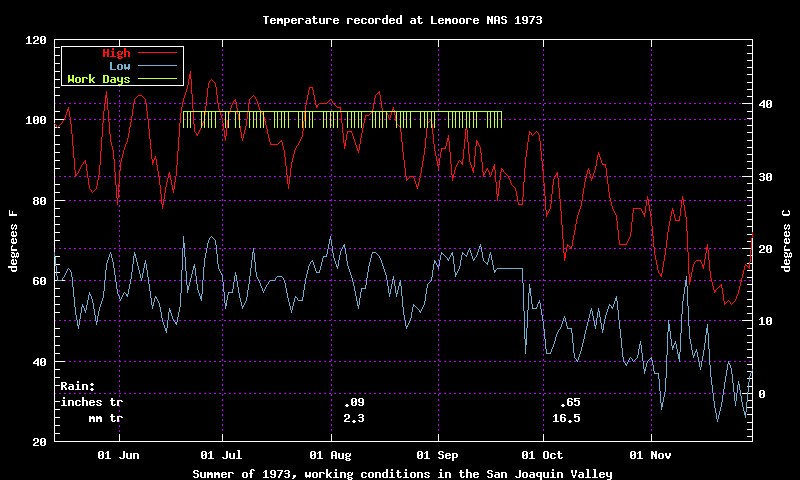
This graph demonstrates just how hot it is in the San Joaquin Valley We worked in the cotton fields of the Boston Ranch Company on the West Side of the San Joaquin Valley on highway 198 between Lemoore and interstate 5 near Coalinga. Heat like this is quite typical of the summer in this area. It was especially intensified by the humidity of the cotton field itself. This was an interesting summer job. We were a small group, mostly students, working for a professor from the University of California, Riverside. We measured the growth of the cotton over time. He was trying to demonstrate how cotton could be grown without adding insecticides. His theory was to allow the natural preditor and prey insects to reach stable populations. These populations were theorized to be low enough for the insects that damage cotton, that no applications of chemicals would be necessary. Unfortunately, since the rest of the San Joaquin Valley was swimming in a sea of insecticides, this untainted field was a wonderful place to hang out if you were an insect that summer. An addition to this theory is to have crops next to the cotton that would be attractants to the insects that damage cotton at the critical time when the plant would be susceptible to damage. |